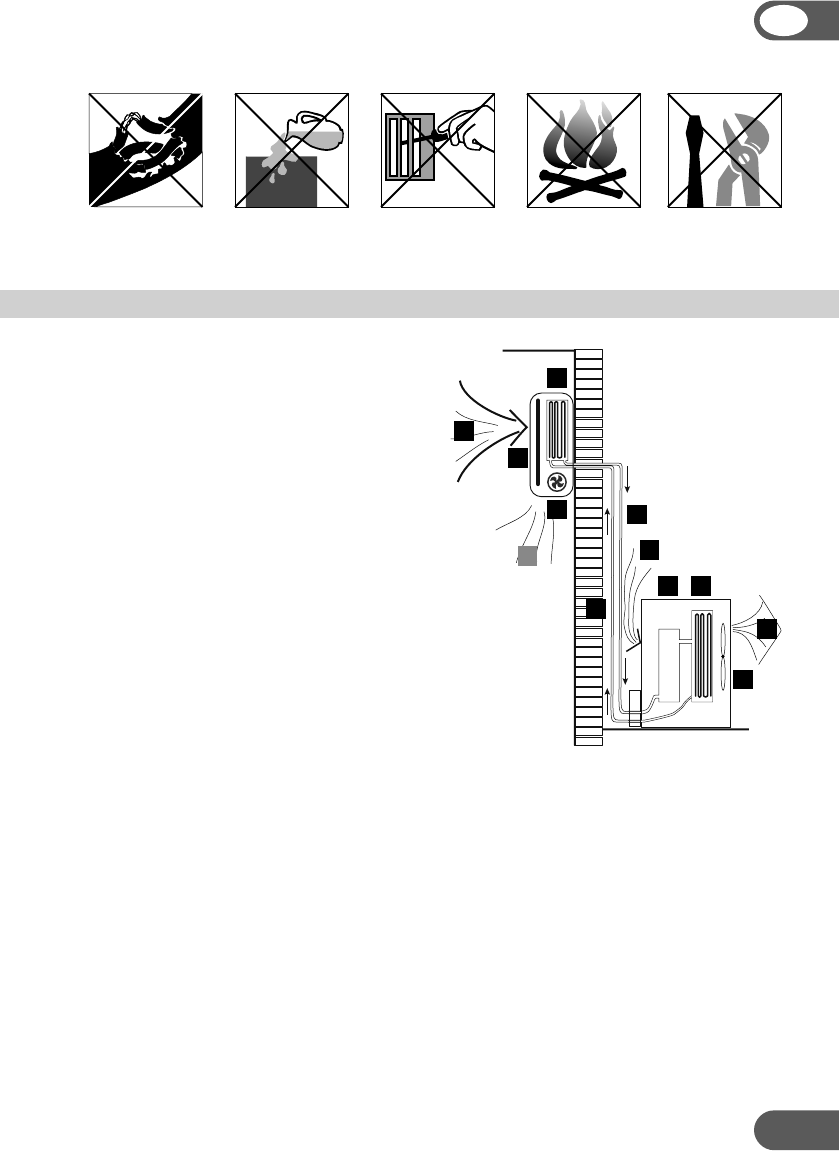
3
GB
Do not use your air conditioner when:
the power cord is
damaged.
there is a chance
of liquids falling on
the unit.
it a close to a heat
source.
there is a risk of
interference from
foreign objects.
This air conditioner
is not made for DIY
repair.
HOW IT WORKS
d
b
c
a
7
5
6
8
1
2
3
4
The compressor (6) in the exterior unit
compresses the refrigerant into a high-
temperature, high-pressure gas. When
this gas flows along the cooling fins of the
condenser (7), heat is extracted and the
gas condenses into a liquid, which is led
to the evaporator (1) in the interior unit.
The liquid expands into a gas at a low
temperature and low pressure.
This gas absorbs the warmth of the air
in the room, the cooled air is blown back
into the room and the heat absorbed
by the refrigerant gas is led to the
compressor.
A fan (3) draws the air (a) over the
filter (2) and evaporator (1) and blows the
cooled air (b) back into the room.
A fan (8) draws air over the condenser
and blows warm air (d) away.
1. evaporator 5. liquid line
2. filter 6. compressor
3. fan 7. condenser coil
4. gas line 8. fan
Heating (H-models only)
The system operates in reverse: the condenser works as an evaporator, the
evaporator as a condenser: warm air is blown into the room. This is ideal for cool
days when the main heating is not on, or to supplement the main central heating in
autumn and spring.
Dehumidifying
As with cooling, the moisture in the air condenses on the cold evaporator at room
temperature and is drained outdoors.


















